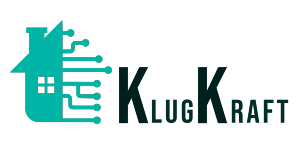Garage automation involves integrating smart technology and automation features into a garage to enhance convenience, security, and efficiency. It typically includes the use of various devices and systems to automate the opening and closing of garage doors, monitor garage security, and provide remote access and control. Here’s an overview of garage automation:
- Smart Garage Door Openers: Smart garage door openers replace traditional garage door openers and are equipped with built-in Wi-Fi connectivity, allowing them to be controlled remotely via smartphone apps. Users can open, close, and monitor the status of their garage doors from anywhere with an internet connection. Some smart garage door openers also offer features such as scheduling, automatic closing, and alerts for unauthorized access.
- Keyless Entry Systems: Keyless entry systems provide convenient access to the garage without the need for physical keys. These systems typically use keypad entry, RFID (Radio Frequency Identification) tags, or biometric authentication (such as fingerprint scanners) to grant access to authorized users. Keyless entry systems enhance security by eliminating the risk of lost or stolen keys and allow homeowners to provide temporary access to visitors or service providers.
- Remote Monitoring and Alerts: Garage automation systems offer remote monitoring and alerts to keep homeowners informed about the status of their garage doors and security. Users can receive real-time notifications and alerts on their smartphones in case of garage door activity, unauthorized access attempts, or sensor malfunctions. This enables prompt action and enhances security by providing peace of mind.
- Integration with Home Security Systems: Garage automation systems can integrate with home security systems to provide comprehensive protection for the entire property. Garage door sensors can be linked to alarm systems to trigger alerts and notifications in case of unauthorized entry attempts or security breaches. Integration with security cameras allows users to monitor garage activity and view live video feeds remotely.
- Vehicle Detection and Automation: Some garage automation systems include vehicle detection and automation features to streamline the process of entering and exiting the garage. This may involve the use of vehicle presence sensors or geofencing technology to automatically open or close garage doors as vehicles approach or leave the property. Vehicle detection and automation enhance convenience and efficiency, especially during busy times.
- Voice Control Integration: Many garage automation systems support voice control integration with popular voice assistants such as Amazon Alexa, Google Assistant, and Apple Siri. Users can use voice commands to control their garage doors, check their status, and receive alerts and notifications hands-free. Voice control integration adds convenience and accessibility to garage automation systems.
- Energy Efficiency Features: Garage automation systems may include energy efficiency features to minimize energy consumption and reduce utility costs. This may involve using LED lighting fixtures, motion sensors, and programmable timers to control lighting and HVAC systems in the garage. Energy efficiency features help conserve energy and create a more sustainable home environment.
- Backup Power and Safety Features: Garage automation systems often include backup power sources such as battery backups or generators to ensure continuous operation during power outages. Additionally, safety features such as auto-reverse mechanisms, obstruction sensors, and manual release mechanisms are built into smart garage door openers to prevent accidents and ensure the safety of users and vehicles.
Overall, garage automation offers numerous benefits, including convenience, security, efficiency, and peace of mind. By leveraging smart technology and automation features, homeowners can enhance the functionality and safety of their garages and enjoy a more connected and integrated home environment.

